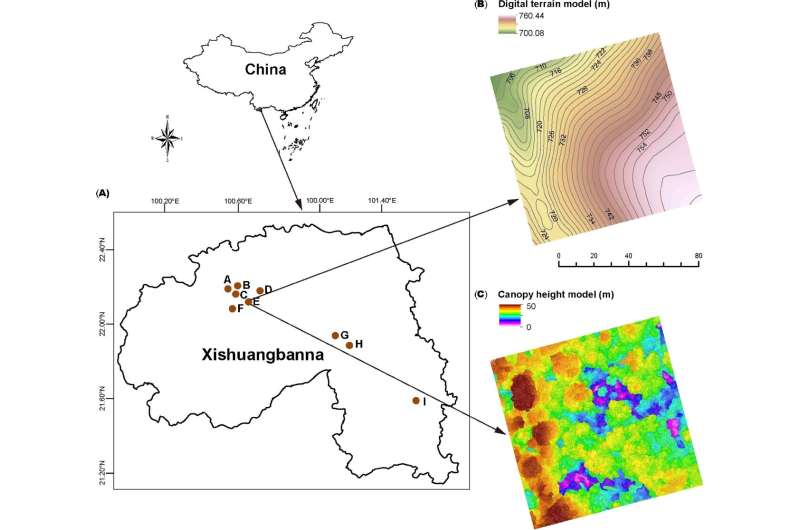Topographic complexity is the most significant factor influencing bird acoustic indices in tropical forests

Ecoacoustics is an interdisciplinary science investigating soundscapes and their association with the environment over various temporal and spatial scales. Despite the data processing challenges (e.g., automated species identification), soundscape monitoring is now being recognized as a cost-effective way to measure biodiversity and assess ecosystem status under environmental change. However, how biophony (biologically produced sounds) varies with vegetation characteristics and topography remains largely unknown.
In a study published in Ecological Indicators, researchers from the Xishuangbanna Tropical Botanical Garden (XTBG) of the Chinese Academy of Sciences investigated the relationship between bird acoustic indices and various environmental factors including vegetation and topographic characteristics in a network of tropical forest dynamics plots in southwest China.
Using autonomous recorders, the researchers recorded a tropical forest dynamics plot network consisting of 22 plots in Xishuangbanna. They assessed the relative importance of tree species richness, six vegetation characteristics, and three topographic characteristics for five acoustic signal complexity indices, and three statistical indices, which describe the properties of frequency spectrum, at 25 m and 50 m spatial scales.
They found that topographic complexity was the most significant factor influencing acoustic indices. Horizontal vegetation characteristics, including tree density and basal area, were also important variables related to acoustic indices.
Furthermore, they found that the Acoustic Diversity Index (ADI) and Bioacoustic Index (BIO) were not associated with vegetation or topographic characteristics at either spatial scale. The Acoustic entropy (H), the centroid (CENT) and skewness (SKEW) and topographic complexity remained a stable relationship.
"Our findings indicate the importance of topographic complexity to acoustic indices. We suggest that topographic complexity should be considered in future ecoacoustic studies in other ecosystems," said He Xuelian of XTBG.
More information: Xuelian He et al, The relationship between acoustic indices, vegetation, and topographic characteristics is spatially dependent in a tropical forest in southwestern China, Ecological Indicators (2022). DOI: 10.1016/j.ecolind.2022.109229
Provided by Chinese Academy of Sciences




















